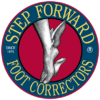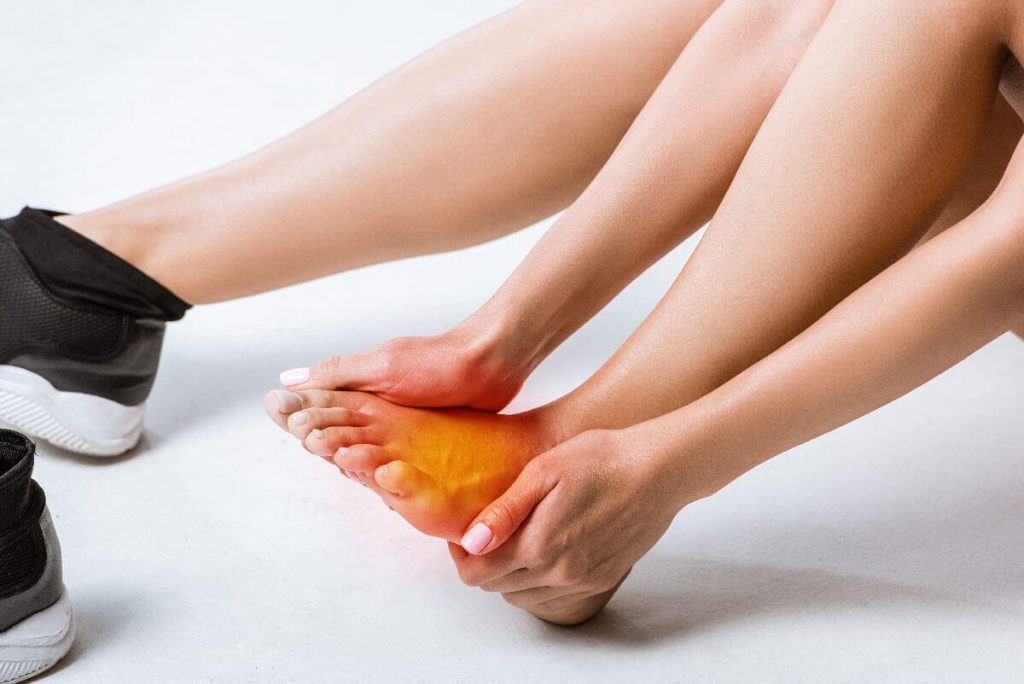We may conclude from the studies and professional opinion that arch support is never a quick fix for pronation, performance, or injury concerns. However, specialized orthotics recommended by experienced experts can aid with certain ailments or injuries.
Pros – Arguments and findings in favor of arch support
- Pronation can be reduced by wearing motion control shoes (even though it’s usually a subtle 2 percent improvement).
- High arches don’t absorb shock as well as feet with a normal arch.
- Shock absorption can be improved with orthotic devices for high arches.
- For the clinical population, orthotics result in improved posture and stability.
For the healthy population, however, it makes very little difference. - Vibrating insoles have been found to improve athletes’ agility and balance.
- Overpronation can lead to a high rate of damage in the foot and leg areas.
- The stress on the Achilles tendon is reduced, as are the risk of ankle eversion or inversion
- In a diabetic neuropathic foot, custom-made orthotics can minimize plantar pressure and the increased risk of ulceration.
- Shoes with a soft midsole and cushioning can lower the requirement for metabolic energy.
- For patients with a history of metatarsalgia, custom insoles can help with metatarsal discomfort, force impulse, peak pressure.
- For individuals with a cavus (high arch) foot type, custom-fit arch support relieves pain and improves function.
- In patients who had an ankle injury, molded prescription orthotics aided with balance and pain reduction during cardiovascular activities.
These are the most crucial discoveries but don’t act just yet. We’ll go through these details in greater detail later.
Cons – Arguments & findings against arch support
- In your arch, the recoil mechanism and compression works can save up to 17% of your effort while doing activities like running. This is because it acts similarly to a rubber ball.
- If you’re wearing a padded shoe, you are likely to strike the ground with more force. You will see a 12% impact on your knees when wearing padded shoes.
- Moderate pronation is not linked with a higher risk of injury
- Some inserts and running shoes can disrupt the spring-like function in the feet. As a result, you will end up wasting more energy
- When running barefoot, you’re less likely to overpronate.
- With marine corps trainers, picking shoes based on the arch type made no real difference to total injury risk.
- No improvements were observed in the strength, posture, stability, or discomfort after a trial using inserts.
- Padded shoes can cause a 12 percent increase in knee impact.
- The spring-like function of the feet can be disrupted by some inserts or running shoes. Because of this, you’ll likely waste more energy.
- An increased risk of harm is not associated with moderate pronation.
- When you are running barefoot, you are less prone to overpronate.
- When you wear a padded shoe, you will strike the ground with extra power.
- In a trial, there were no gains in strength, posture, stability, or discomfort after utilizing shoe inserts.
- Despite rarely wearing shoes, the Zulu populace has the healthiest feet.
- Despite having more access to modern footwear, Europeans have the unhealthiest feet.
- Even though they have comparable sorts of feet, identical arch supports can have different results from person to person.
- Shoe inserts or arch supports can’t always change the center of path pressure in the right direction.
- It is not evidence-based to prescribe higher cushioning heels or pronation control shoes solely based on the arch type.
- Accommodative orthotics were proven to be ineffective in preventing lower-limb injuries.
- Knee joint moments cannot be consistently improved with insert treatments or arch support.
- For flat-footed students, short foot workouts were more helpful than arch support insoles.
- Inexperienced runners benefit from barefoot running and minimalist shoes because they run more efficiently.
Heel injuries & Plantar fasciitis:
The second most vulnerable portion of a runner’s body is their heels. Plantar fasciitis is a frequent heel problem that causes stabbing pain.
Arch support has been demonstrated to reduce discomfort in studies, owing to the fact that it gives a more supportive cushion to the affected region. Flat-footed athletes suffering from plantar pressure may benefit from neutral cushioned shoes.
Another experiment including 43 patients with plantar fasciitis was conducted. Pain reduction and improved foot-related quality of life were reported after a year of follow-up. The study concluded that foot orthotics are beneficial in the treatment of plantar fasciitis.
Do I need arch support?
There is likely no need if you don’t have any pain or difficulty running or walking. It’s important to remember that pronation or a particular arch type isn’t an issue that has to be corrected.
Our feet and arches have a fantastic support system. In rare circumstances, you will require outside assistance (e.g., arch support). The prescription, however, has to come from an expert, such as an orthopaedic doctor or a podiatrist, rather than an untrained professional.
That isn’t to say that shoes don’t make a difference. It’s more of a reference that you shouldn’t buy a shoe only on the basis of a wet test. Remember that advising similar shoes based on your foot type and pronation control, isn’t based on scientific data.
Do arch supports work for high arches?
You don’t require corrective shoes and inserts on the simple basis that you might have higher arches.
Injuries are more likely in people who have a very high arch. It was discovered in a study that trainees with higher foot arches are 3.9x more likely to experience injuries.
Custom orthotics may be recommended if typically have higher arches and are having problems with balance or injury. For patients with high arches, custom foot orthotics can reduce foot pain by 74 percent. In another study, custom orthotics outperformed dummy insoles in terms of discomfort, function, and quality of life. It demonstrates that custom orthotics are superior to off-the-shelf arch supports.
A high arch is not a condition that requires treatment. Each foot type has its own set of advantages and disadvantages. High arches put more strain on the metatarsal and plantar fascia, whereas low arches put more strain on the navicular, cuboid, and calcaneous.
You must play to your strengths while improving your flaws. It’s not going to happen because of your shoes.
Do arch supports work for flat feet?
The impact of flat feet on short-distance, middle-distance, and long-distance runners was investigated in a study. In long-distance running and 100-meter sprints, people with a normal arch fared better. In the 600-meter middle distance race, though, the performance was comparable.
So what actually does that mean?
You don’t have to be concerned about being flat-footed unless you participate in competitive sports or want to improve your performance across short sprints or lengthy distances.
In individuals with flat feet, arch support will usually result in decreased oxygen consumption and an improved economy.
People that are flat-footed have little to no rotational anomalies in their lower limbs. Now, while your shoes should fit well and support your natural biomechanics, there’s no need to become focused on a specific sort of shoe simply because of your flat feet.
Do I need custom-fitted orthotics or arch support?
Over-the-counter arch insoles and supports are not as effective as custom-fit orthotics. You should see a podiatrist if you’re having troubles or wish to improve your performance.
At first, prefabricated arch support may feel comfortable, but you never know when it will begin to place additional strain on other muscles or joints, perhaps leading to damage.
Also, keep in mind that two people with nearly identical arch types will react to the arch support in different ways. Arch support can only do so much because there are anatomical, mechanical, psychological, and neurophysiological elements at play.
Do Arch Supports Work – Conclusion
For runners, arch support is unlikely to make a significant impact on injury risk, performance, or balance. Also, it’s not just for running shoes; any other type of shoe, such as training or hiking shoes, can do the same. That isn’t to say you shouldn’t use shoes designed for a certain sport, such as Crossfit or workout sneakers. However, just because a salesperson believes your arch is a little too low or high, it’s pointless to spend more money on arch support inserts and shoes. When utilized after consultation with a physician or qualified coach, custom orthotic insoles or special shoes can help with pain management and dealing with particular foot-related issues.
We’ll wrap up this piece with some excellent advice from one of our experts.
You should probably avoid using arch support if you don’t need it. When you don’t have a stress fracture or a broken bone, it’s the equivalent of wearing a cast. Why would you do something like that? The greatest ways to avoid injury are to make sure your body is balanced in terms of strength, mobility, and flexibility, to train smartly, and to get enough sleep and nutrition. Only one part of the body is affected by arch support. Don’t lose sight of the bigger picture.
Step Forward Custom Orthotics
Step Forward USA manufactures state-of-the-art proprioceptive insoles which are distributed to many countries across the globe.
For foot problems, our orthotics offer relief as well as helping with problems related to misalignment of the feet, including posture (ankles, hips, knees, neck, and back). Some common foot problems they can help with are Bunions, Plantar Fasciitis, Hammertoes, and many more.
Learn more about our foot correctors here.

